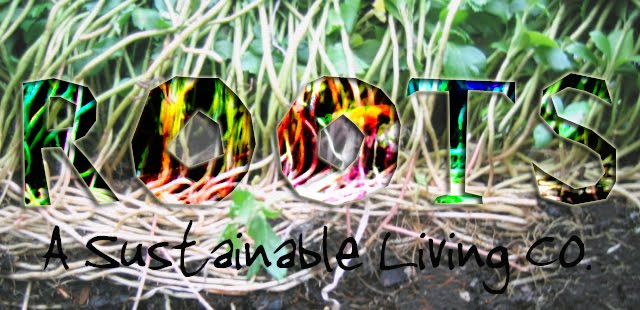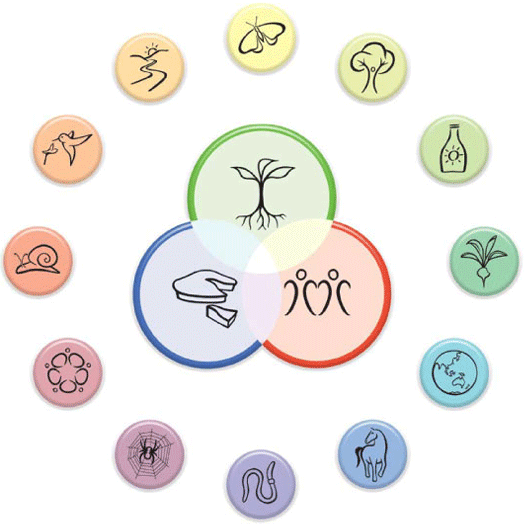
So the idea of making these seed balls has been brewing in our minds for some time, and it finally came together! This technique has been utilized by our dear friend, Masanobu Fukuoka, among many others, and has proven to be very effective in re-vitalizing and establishing new plantings among previously abandoned, deserted, deforested, desolated areas. They are super fun to make and equally fun to toss all around, only to watch the progress that can be made with very little input. If you can search out some decent clay (can use potters clay), a bit of compost, and some water, then you're ready to give it a go.
 First we gathered what looked liked clay and performed a shake test to determine how much of our sample actually was clay. This is a great way to get a quick and accurate read of your soils structure. We filled a third of our container with the soil sample, added water about 3/4's of the way up, and began shaking. Within five seconds sand and heavier particles sank to the bottom. Within a few minutes the silt had settled (which there was very little in this sample), and finally on the top horizon (maybe have to wait several hours to completely settle) was the clay. Some organic material may stay suspended. We determined this would work for now and so we gave it a go.
First we gathered what looked liked clay and performed a shake test to determine how much of our sample actually was clay. This is a great way to get a quick and accurate read of your soils structure. We filled a third of our container with the soil sample, added water about 3/4's of the way up, and began shaking. Within five seconds sand and heavier particles sank to the bottom. Within a few minutes the silt had settled (which there was very little in this sample), and finally on the top horizon (maybe have to wait several hours to completely settle) was the clay. Some organic material may stay suspended. We determined this would work for now and so we gave it a go.The clay acts as a bond, as well as, protection for the seeds. Most often, during broadcasting, a good amount of seed is lost to critters and erosion. This method will offer the seed a safe haven until the rains begin to break down the barrier. The compost will help the seed germinate and add some organic material for the newly established life. So with this in mind, decide what plants you are looking to establish in your given area, accumulate these seeds, and you're ready to get started.
 We began by adding a few handfuls of our clay to one handful of compost into a bucket or tray. I've read 5:1:1 (clay, compost, seed). Then add one serving of the seed mix. Now begin shaking the tray or bucket while slowly adding a little bit of water. As you're shaking notice how the seed balls begin to form. After some trial and error we were able to determine the right amount of water for our given mix. This may vary based on your type of clay and seeds. We then placed our formed seed balls onto a tarp in the sun, to dry. Once they cured up after several hours we gathered them into a basket and were ready to spread. And it was just our luck that rain was on the way.
We began by adding a few handfuls of our clay to one handful of compost into a bucket or tray. I've read 5:1:1 (clay, compost, seed). Then add one serving of the seed mix. Now begin shaking the tray or bucket while slowly adding a little bit of water. As you're shaking notice how the seed balls begin to form. After some trial and error we were able to determine the right amount of water for our given mix. This may vary based on your type of clay and seeds. We then placed our formed seed balls onto a tarp in the sun, to dry. Once they cured up after several hours we gathered them into a basket and were ready to spread. And it was just our luck that rain was on the way. So we took our start and began broadcasting the seeds. Our particular mix was for erosion control and nitrogen fixation. We used a mix of vetch, clover, rye, oats, fescue, and brome grasses :
So we took our start and began broadcasting the seeds. Our particular mix was for erosion control and nitrogen fixation. We used a mix of vetch, clover, rye, oats, fescue, and brome grasses :And so that's is our seed ball story! Be creative and let us hear your results. Once again you can utilize any seed mix you want. Take a few minutes to observe your area and let it give you some clues as to what might take. Look at the sun exposure, canopy and nearby plants/trees if any, water conditions and accessibility, wind direction, wildlife, and soil structure. Keep us posted on your progress.











